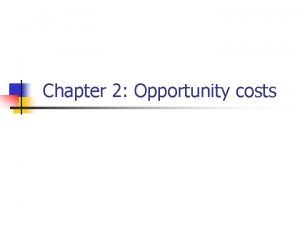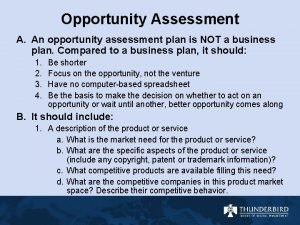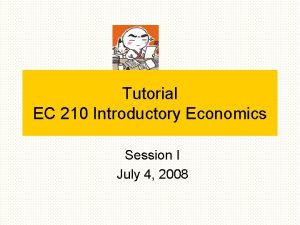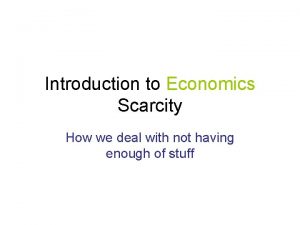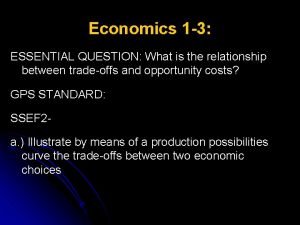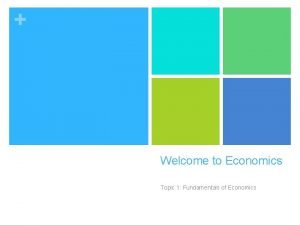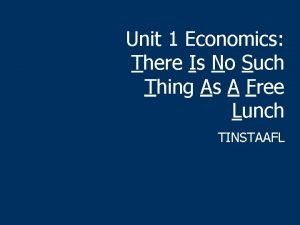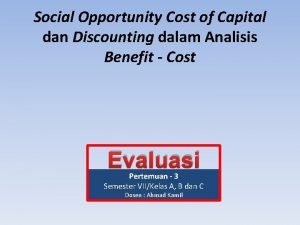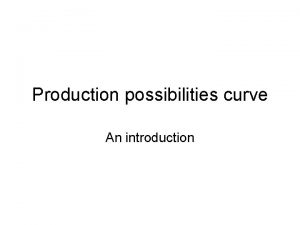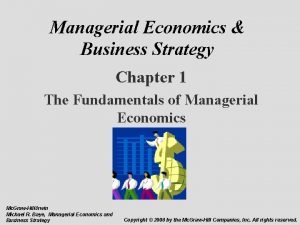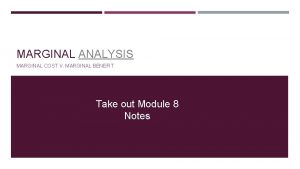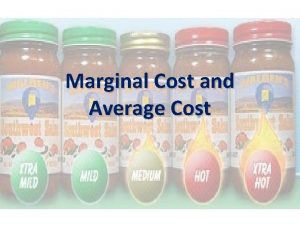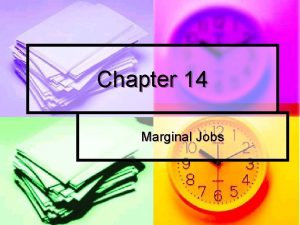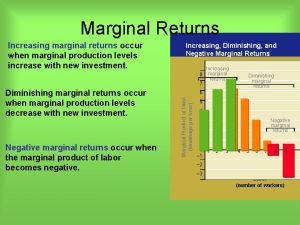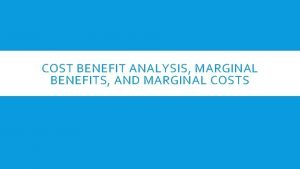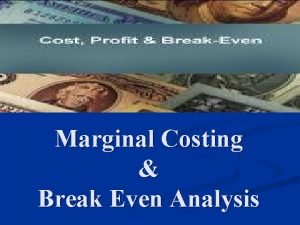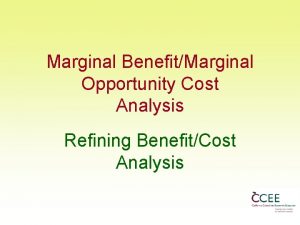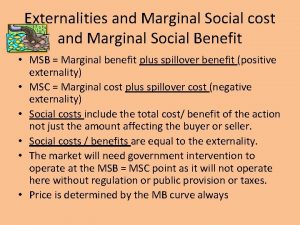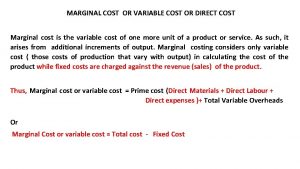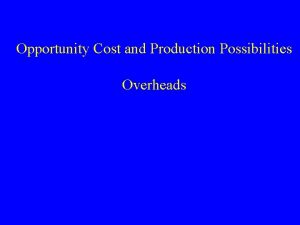MARGINAL ANALYSIS AND OPPORTUNITY COST Marginal Analysis Study













- Slides: 13

MARGINAL ANALYSIS AND OPPORTUNITY COST

Marginal Analysis � � Study 5 hours – get B Study 6 hours – get B + What is the marginal benefit? What is the marginal cost?

Marginal Analysis � The comparison of marginal (extra or additional) benefits and marginal costs, usually for decision making � Example: The basic package for a brand new car is $20 000. If you want leather seats, it’d cost you $22 000. Would you upgrade to leather seats? � What is your marginal benefit? � What is your marginal cost?

� The examples so far is hard to quantify (in other words, hard to put into numbers)

This example would allow you to calculate marginal benefit against marginal cost � � � Company A is deciding whether to establish a new factory The cost of that factory is $20, 000. The projected revenue that the factory brings in is $15, 000. Should we go ahead with the decision? Another employee found out that if you establish the factory in Saskatchewan, the cost will only be $10, 000. Should we go ahead with the decision?

Another Example: � � � On average, 2 -3 cars enter the Hemington Park in an hour. The park fee is $3 per car. Currently, there is a ticket attendant at the park’s entrance. The wage of that attendant is $12/hour. Should the park continue to keep this ticket attendant?

Marginal Analysis � Marginal Benefit � Additional Benefit � The difference in satisfaction gained between the 1 st choice and the 2 nd choice � Marginal Cost � Additional cost � The difference in cost between the 1 st choice and the 2 nd choice

Opportunity Cost • • • The utility that could have been gained by choosing an action’s best alternative The value of what you give up Simply put: Your opportunity cost is your tradeoff

Question: � • • Describe some of the tradeoffs faced by: A family deciding whether to buy a new car A member of parliament increasing spending on national parks

Question: Is scarcity a bad thing? � � � Scarcity forces us to put value on goods and services Therefore, goods would only go to those that really value it Therefore, scarcity helps us better utilize resources so that these resources are not wasted

True Cost Question: • You were planning to spend Saturday working at your part-time job, but a friend asks you to go skiing. If you decide to go with your friend, what is the true cost of skiing?

Answer � � True cost = accounting cost + opportunity cost In this case, it’d be: � Cost of skiing + salary given up � In this case, it’d be: � In other words: True Cost = Accounting cost + value given up from the next best alternative

Are free lunches really free? � � Could the resources used to create your lunch could be used to create something else? Ultimately, something has to be given up to create this “free lunch” for you – so from an economist’s point of view, there is always opportunity cost, so it’s actually not free
 Marginal and opportunity cost
Marginal and opportunity cost Difference between opportunity cost and trade off
Difference between opportunity cost and trade off Distinguish between average cost and marginal cost
Distinguish between average cost and marginal cost An opportunity assessment plan
An opportunity assessment plan Trade off and opportunity cost
Trade off and opportunity cost Scarcity def
Scarcity def Trade off and opportunity cost
Trade off and opportunity cost Scarcity, choice and opportunity cost example
Scarcity, choice and opportunity cost example The relative proportion of variable fixed or mixed
The relative proportion of variable fixed or mixed Trade-off vs opportunity cost
Trade-off vs opportunity cost Opportunity cost vs trade off
Opportunity cost vs trade off Opportunity cost of capital adalah
Opportunity cost of capital adalah Zero opportunity cost graph
Zero opportunity cost graph Opportunity cost in accounting
Opportunity cost in accounting
